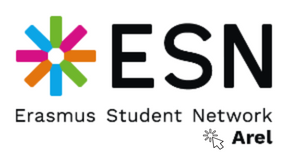ECTS Methodology
What is ECTS?
ECTS (European Credit Transfer and Accumulation System) is a credit system adopted by Istanbul AREL University as a quality assurance tool to achieve its strategic goals in national and international education and training processes. Created by the European Union (EU) to facilitate student mobility and ensure recognition of education received abroad in their home countries, ECTS is a student-centered credit system based on the student’s workload.
What is ECTS Credit?
- It is the European Credit Transfer and Accumulation System.
- It is an assessment system that shows how much time a student spends on each course or module in an educational program (workload) or the total workload for an academic program.
- The term “workload” refers to the time spent by a student. This load is calculated by the instructor in accordance with the rules mentioned above, taking into account the average student. Including student opinions in the calculation increases the quality assurance and acceptability of the implementation.
- It is based on the time students spend learning rather than the time spent teaching.
- It is outcome-oriented, focusing on desired learning outcomes rather than input.
- It is more output-oriented than input-oriented.
- It is a numerical value indicating the student workload required to complete each course to achieve the targeted learning outcomes.
- Associate Degree Programs: a total of 4 semesters x 30 ECTS/Semester = 120 ECTS
- Bachelor’s Degree Programs: a total of 8 semesters x 30 ECTS/Semester = 240 ECTS
- Master’s Degree Programs: a total of 4 semesters x 30 ECTS/Semester = 120 ECTS
- Doctoral Programs: a total of 6 or 8 semesters x 30 ECTS/Semester = 180-240 ECTS
Calculation of ECTS
In a semester, there are 14 weeks of education (equivalent to 70 working days), one week of exam preparation, and two weeks of final exams, making a total of 17 weeks of workload in a semester. Considering that a student’s duty is to be a full-time student, a student needs to work for 45 hours. Thus, the calculation is as follows for how many hours correspond to 1 ECTS. Since labor law allows 45 working days in a week, the total working time for a student in a semester is calculated as 17 weeks/Semester x 45 hours/week = 765 hours/Semester.
On the other hand, since there will be a workload equivalent to 30 ECTS/Semester in one semester, and this load is represented as 765 hours/Semester, the calculation is made for how many hours correspond to 1 ECTS.
Therefore, (765 hours/Semester) / (30 ECTS/Semester) = 25.5 hours/ECTS, which means 1 ECTS credit corresponds to a workload of 25.5 hours. For a student to earn 1 ECTS credit, the student must spend 25.5 hours per semester.
Purpose of ECTS
- Facilitate student mobility internationally.
- Provide transparency to higher education institutions about student performance.
- Ensure recognition of the education received by students abroad in their home countries.
- Provide transparency of study programs and establish example application rules based on transparency and student success for the regulation of academic recognition.



